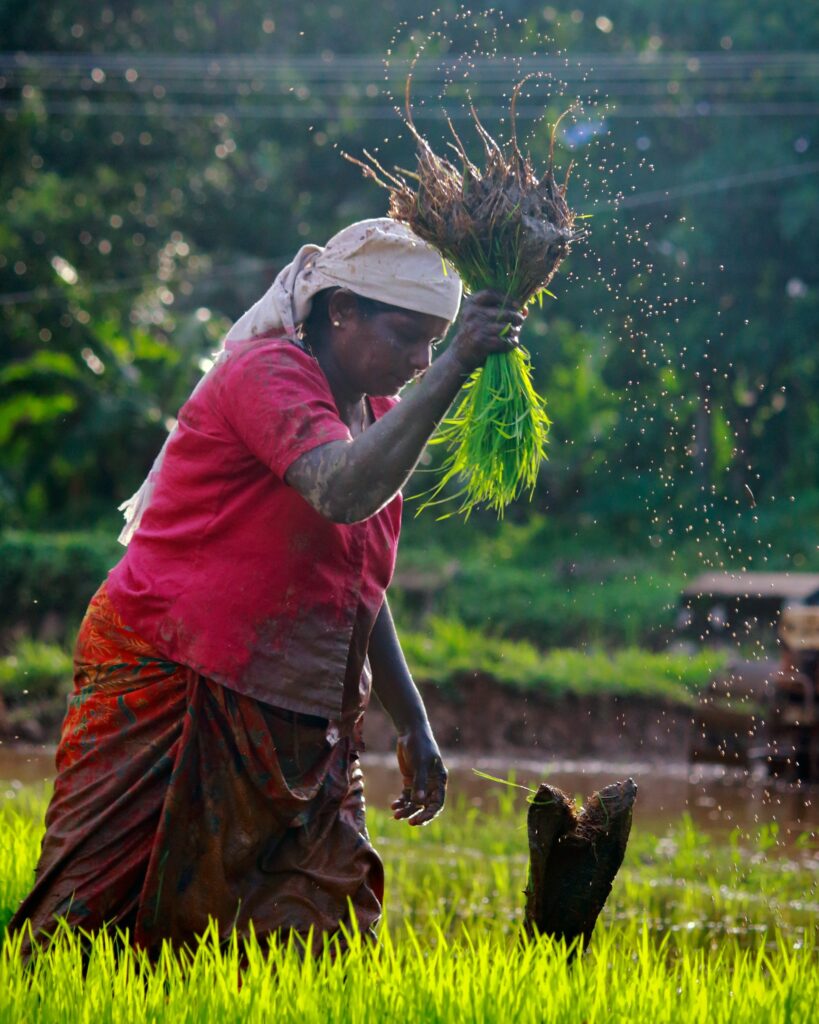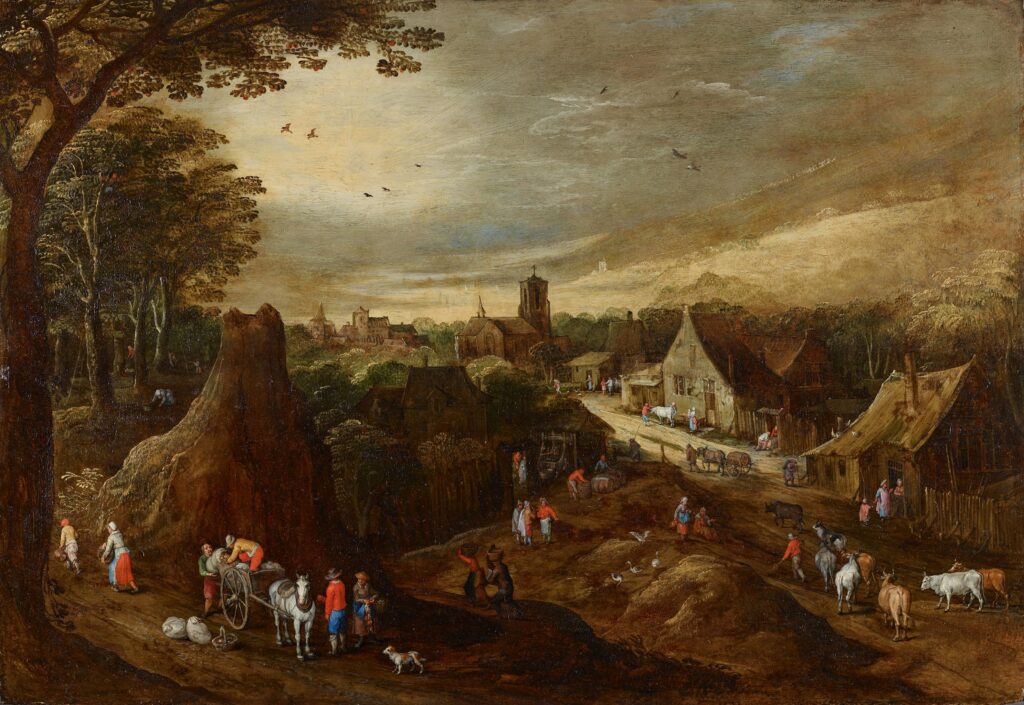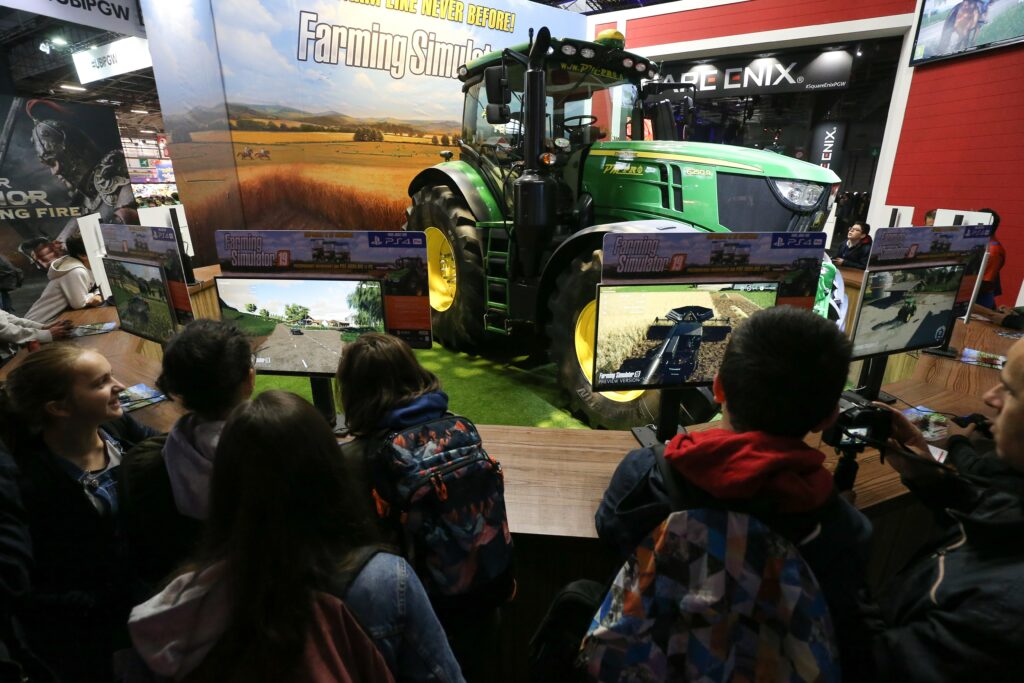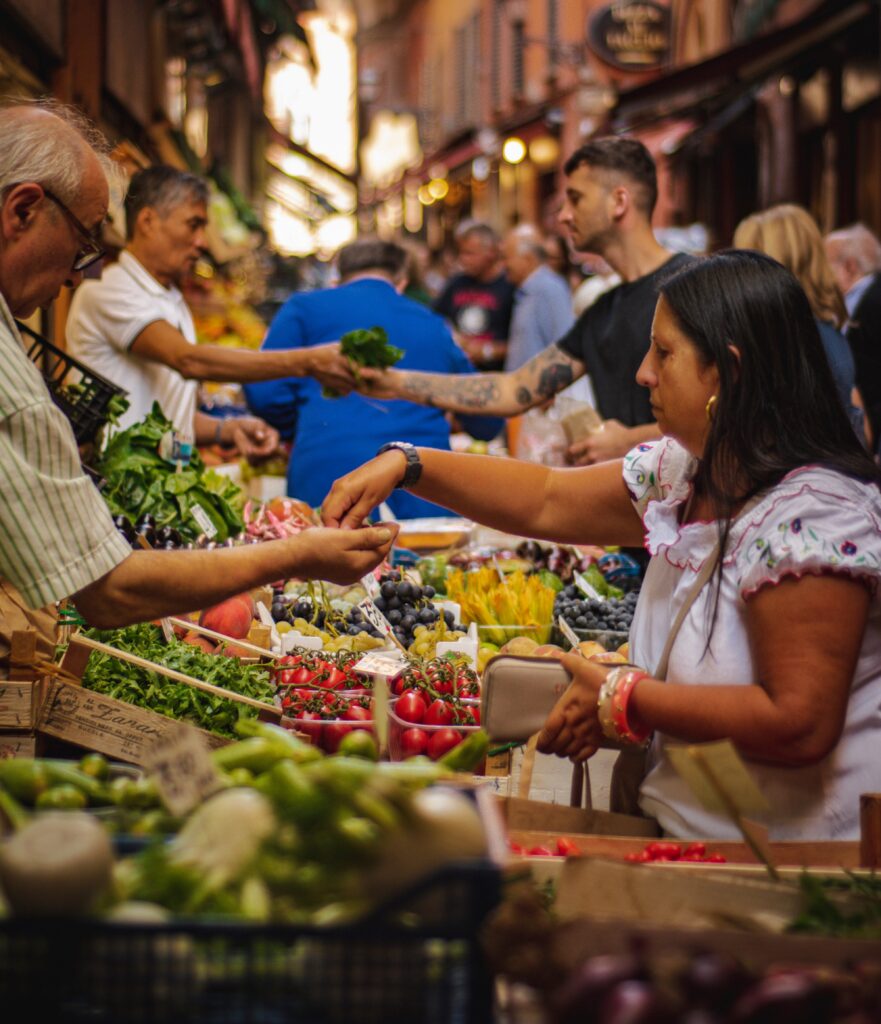With So Few Farmers, Why Are Video Games About Farming So Popular?
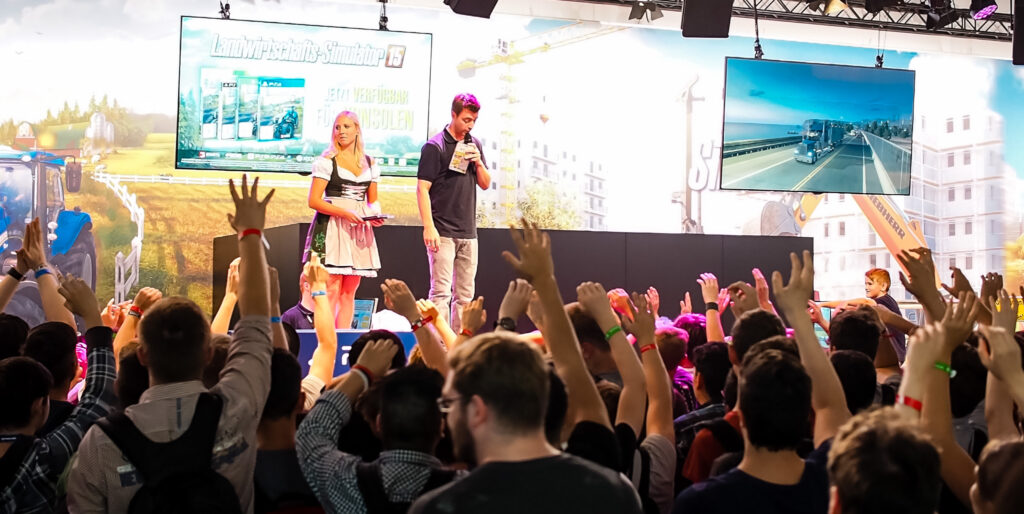
“I hate when I have to harvest at night,” my husband complained the other day. Lately, he’s been trying to maximize his harvests so he can upgrade his combine.
But he’s not a farmer. He’s a practicing lawyer. He said this from his computer as he toggled between a video game and a YouTube video of someone talking about playing the same video game.
That game is Farming Simulator. At peak times, up to 90,000 players are active at once. On YouTube, Farming Simulator fans upload videos of game play, tutorials, and even the reactions of real farmers watching the game. And Farming Simulator is not alone: FarmVille, Sim Farm, and many other games simulate farming and rural life with various levels of realism. Most players who speculate on grain prices, buy fancy tractors, and rush to harvest fields before they spoil are not farmers in real life.
As an archaeologist who studies food, I’m fascinated by farming simulations. Across the globe, the proportion of people who make their living as farmers is lower than at any time since agriculture became widespread. In 2020, farmers accounted for only 1.4 percent of U.S. jobs. At a time when few people in industrialized nations are likely to know someone who is actually a farmer, millions of people have built virtual farms.
Why? What do people like my husband, who lives in a city and works every day in an office, find so entertaining about tilling faux fields and tending to pixels representing wheat or sheep? And what does this game’s popularity reveal about the deep history of farming and the role of agriculture in people’s lives today?
THE DEEP HISTORY OF FARMING
For most of human history, everyone was a forager. Foragers hunt, gather plants, fish, and collect other resources from their natural habitats. Many foraging societies reshape the landscapes where they live—for example, by using fire to curate forests rich in desirable food resources. Typically, though, they do not reshape plant or animal species by intentionally selecting for different characteristics that make them more delicious, easier to manage, or able to survive outside their natural habitats. This process, called domestication, was independently invented by people living in different parts of the world, beginning around 12,000 years ago.
My research into the transition from the earliest domestication to a lifestyle supported mainly by cultivating domesticated plants and raising domesticated animals—in other words, farming—focuses on what happened, albeit differently, in places such as Mexico, China, Turkey, and the United States. By around 5,000 years ago, farming had become a common approach to making a living around the world.
In early farming communities, as among foragers, almost everyone was directly involved in obtaining food. Early forms of farming were labor intensive, and farmers often focused their efforts on crops like wheat, rice, or corn. These staples are dense in calories but require additional labor to thresh, grind, and prepare.
But because farmers could grow more food on a patch of land than might naturally occur without human intervention, they could produce more food than their families needed. Surplus food could support the work of specialists like expert potters and weavers, or help some families stockpile wealth and influence.
As farmers selected for even more productive crops and developed technologies like irrigation and plows, more people could devote their time to non-agricultural pursuits. That trajectory led to economies like that of the U.S., in which there are about 2 million farmers in a country of 330 million people.
Archaeologists used to assume agriculture was a revolutionary innovation that immediately improved lives and opened the door for cities, wealthy elites, and all the trappings of civilization. However, research from many early farming societies suggests this was not the case. In some parts of the world, such as what is now Mexico and the U.S. Southeast, ancient foragers mixed some plant cultivation with hunting and gathering for thousands of years, and only much later developed diversified farming systems that supported large populations in cities.
In many cases, early farmers lived shorter, less-healthy lives than their forager ancestors, due to famine and the spread of disease through dense communities. Rather than a revolution, agriculture may have been a necessary evil—the only way to feed a growing population or a tool for status competition or elite bureaucracy.
Over time, domesticated plants and animals, agricultural knowledge, and farmers themselves spread outward from agricultural centers. But some foraging societies chose not to adopt farming—some even after living side by side with farmers for millennia.
Even if farming did not automatically make life better, it came to shape people and cultures around the world. In Mesoamerica, Maya people in the past and today have considered themselves “gente de maíz,” formed from corn by divine Creators. In Northern Europe and Central Africa, genes that allowed people to better digest milk as adults spread through populations where domesticated cows were important resources.
In the Inca Empire, farmers and engineers terraformed the Andes mountains with terraces, canals, and raised field systems to increase agricultural production. Emperors used surplus corn to brew beer, which they served at political feasts and offered to gods and ancestors. Their calendar marked the phases of the agricultural year with ceremonies such as the winter solstice celebration Inti Raymi.
Until recently, most people lived in a society deeply tied to the rhythms and sensibilities of farming. So, is Farming Simulator a high-tech form of nostalgia for this kind of connection to the land and food?
FASCINATED WITH FARMING
For some Farming Simulator players, farming itself may be beside the point. Some are most excited about the machinery and equipment; the newest version of the game features digital re-creations of more than 400 real machines and tools that players can buy with profits from their farms.
For other players, building a digital farming enterprise may be about building community. Robust communities of Farming Simulator players interact on YouTube and elsewhere. Millions of subscribers watch videos that receive tens of thousands of views within a day or two of being posted.
The power of video games to foster vibrant virtual communities is well-documented. Based on his participant observation within the game Second Life, anthropologist Tom Boellstorff has found that players value socializing and building relationships, creating identities that can feel as real, or even more authentic, than those they inhabit outside the game. Since the beginning of the COVID-19 pandemic, online games have become a social lifeline for many players isolated by social distancing and quarantine.
While immersive online games help players escape from boring or unpleasant everyday realities, researchers have found that they can also be spaces that invite players to empathetically connect with other realities and lived experiences. Building on this potential, anthropologist Dvera Saxton has worked with students from farmworker families to create video games aimed at fostering empathy and appreciation for the struggles of agricultural workers.
Farming Simulator players might thus be seeking to escape the constraints of their everyday lives and experiment with new identities. Some real farmers who play the game say it lets them experiment with equipment or strategies that are out of their financial reach, given the current economic realities for family farms.
Others use the realistic landscapes within the game to re-create family farms now lost to them. My husband grew up in rural West Virginia, only a generation away from subsistence farmers. He says playing the farm game is relaxing because it helps restore that connection to rural life. In some sense, Farming Simulator is a vehicle of nostalgia for farms that no longer exist.
Food writer Michael Pollan has discussed the irony that cooking shows and celebrity chefs capture our imaginations at a time when people in the U.S. spend less time than ever cooking daily meals. In a similar vein, the current proliferation of farmers markets, community-supported agricultural subscriptions, farm-to-table dining, and urban gardens reveals a fascination with farming on the part of many people living in suburbs and cities.
These movements often explicitly reject industrialized farming, while Farming Simulator players embrace high-tech machinery and farm extensive monoculture fields. Yet both may represent an idealized but sincere attempt to reconnect with what was once an essential part of most people’s daily lives.
The popularity of farming simulators points to people’s enduring engagement with farming as a way to understand our relationship with the natural world, not just a system of food production. Farming has been fundamental to who we are as humans. And in a world where war, climate change, and pandemics can so easily disrupt global food supply chains, it still is fundamental—but in ways that are less and less within the reach of the average person.
Perhaps farming simulators help bring the complexity of global agriculture back to a human scale, where you can harvest hay in a field while a virtual twilight falls.































